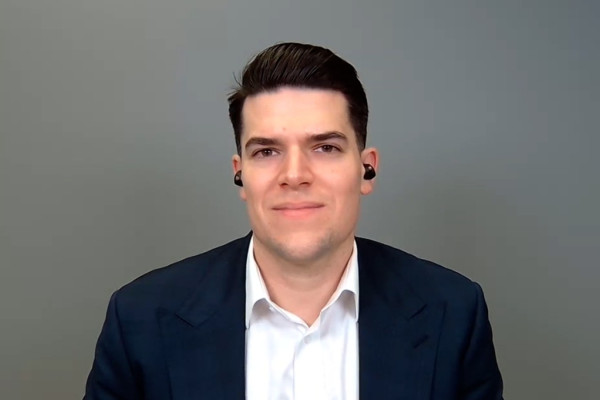Jarden and NAB to launch leading wealth advice and asset management business in New Zealand
Jarden and NAB have today signed an agreement to combine wealth advice and asset management businesses in New Zealand.
Across Australia and New Zealand there are a number of large capitalisation healthcare companies that have delivered strong and consistent valuation growth over the last ten years including Fisher & Paykel Healthcare, Ryman Healthcare, CSL, Cochlear and Ramsay Healthcare.
Two standouts in New Zealand have been F&P Healthcare and Ryman. F&P Healthcare’s global market opportunity contrasts with Ryman’s focus on New Zealand and Victoria, Australia to date. The research & development focus for F&P Healthcare also differs from Ryman’s capital-intensive infrastructure healthcare asset base.
But there are similarities too, which include large addressable markets; products and services based on needs linked to favourable demographics and healthcare trends; very strong customer proposition; and great execution. If we extend the universe of large-cap healthcare stocks to include Australia, investors have been spoilt with choice with CSL, Cochlear and Ramsay Healthcare all delivering meaningful growth in market capitalisation during the last decade.
CSL is unique in this Australasian context and is a leading global biotechnology company involved in the development and delivery of innovative biotherapies and influenza vaccines. Despite its larger scale, it has grown at a similar rate to Ryman during the last ten years – its market capitalisation growing from $25 billion to $135 billion over that period. During the same period, F&P Healthcare’s market valuation went from $1.6 billion to $19 billion while Ryman’s grew from $1.3 billion to $7.2 billion.
Cochlear has more in common with F&P Healthcare. CSL, Cochlear and F&P Healthcare’s success has been closely linked to their ability to monetise intellectual property with consistent investment in Research & Development. F&P Healthcare invests about 8-10 per cent of revenue each year – now well over $100 million in Research & Development annually.
F&P Healthcare has low asset intensity with total assets sitting at around 1x revenue which has helped support its organic growth. F&P Healthcare has not raised any meaningful equity capital over the last ten years and has been able to grow dividends while expanding its manufacturing capacity for growing demand and maintaining low levels of debt – indeed F&P Healthcare is currently in a net cash position.
The funding models supporting sales for CSL, Cochlear and F&P Healthcare are all very robust. For CSL, a combination of the scarcity and superior efficacy/safety of its product generates a level of pricing that is seldom under pressure especially whilst there is a tightness in supply. Similarly, Cochlear and F&P Healthcare sell into an established hospital channels that have seen little price compression.
Ryman and Ramsay are both involved in the provision of healthcare services. Their business models rely on healthcare infrastructure rather than intellectual property to provide services and generate returns. In particular, Ryman has a high level of asset intensity with total assets over 10x statutory reported revenue.
That greater capital intensity impacts the balance sheet. Ramsay has meaningful bank debt and right of use liabilities on its balance sheet. While it had managed to grow without raising equity for a long time, it had to do a meaningful capital raise last year to stabilise its global balance sheet at a time of great uncertainty around COVID. Ramsay went hard and early on the capital raise.
Despite the asset intensity, one of the major attractions in Ryman’s business model has been its ability to grow without raising capital in the last ten years.
Ryman has raised no equity in the last ten years and the growth in its market value reflects an efficient growth funding model for equity investors. There are three key drivers behind this:
While it hasn’t grown as strongly as F&P Healthcare, Ryman has also been able to grow its dividend. The growth in the absolute scale of Ryman’s asset base is driving some changes in funding asset growth. Ryman has begun diversifying its funding sources away from the banks and the introduction of accommodation bonds in New Zealand will see it borrow from care patients. These things should help keep the development engine running without the need for equity for some time.
Whereas F&P Healthcare and its peers have experienced little pressure on funding for their products, this has been a factor weighing on Ramsay more recently (reimbursement; reduction in private insurance in Australia coupled with wage pressure). Ryman also has some issues with the care funding model in New Zealand that are impacting its statutory operating profitability. It appears that care funding has not been keeping up with the increasing costs associated with provision of care services.
These Australasian healthcare companies look well placed to continue to benefit from strong fundamentals in the market and strong execution. We expect the rate of market valuation growth to be influenced by intellectual property and the ability to protect it through R&D – critical for F&P Healthcare and its peers; asset intensity (premiums for lower asset/capital intensity business models more likely); and funding models. When we look out five years, we see strong growth in the earnings and dividends these businesses generate.
In the case of F&P Healthcare, CSL and Cochlear we see the ability to grow without taking on more debt. Meanwhile, Ryman continues to be well placed on its objective to double its underlying assets every five years but this will come with meaningful growth in the amount it needs to borrow from capital providers, its residents and care patients.
Arie Dekker
Head of Research
Steve Wheen
Head of Healthcare, Equity Research
Arie Dekker and Steve Wheen are analysts at Jarden. This article reflects the opinions and views at the time of publication, and is not to be relied upon as a basis for making any investment decision. Please seek specific investment advice before making any investment decision.
Sales and research disclaimer is available here.
All media enquiries, please contact:
Jill Valentine | M. +61 416 189 554 | [email protected]
Jarden and NAB have today signed an agreement to combine wealth advice and asset management businesses in New Zealand.

Reaching our goal three years ahead of target In 2016, Jarden set the ambitious goal of quadrupling the business by 2026.

A slowdown in consumer spending or economic growth is nowhere to be seen in Australia, despite its Reserve Bank increasing the cash rate to its highest level in seven years…
Loading form...